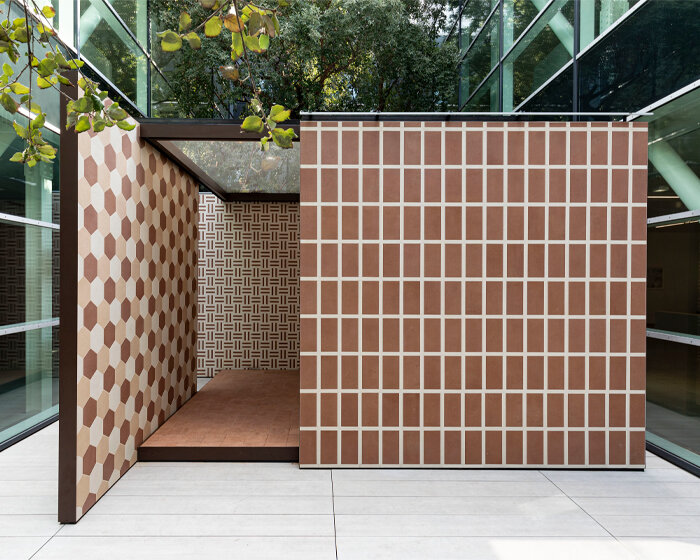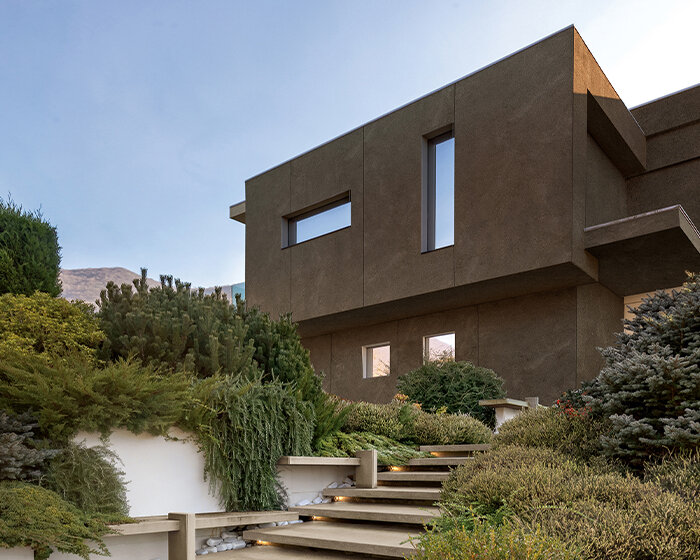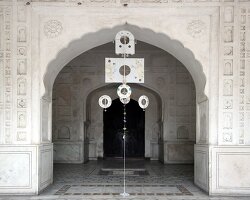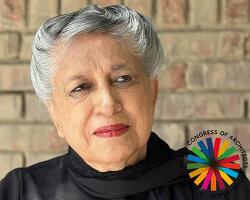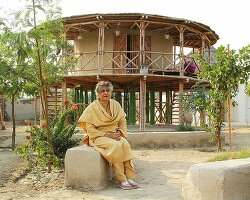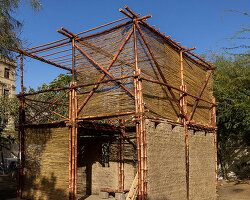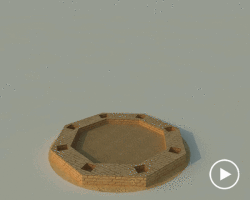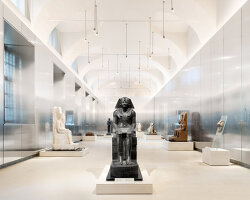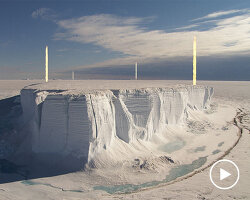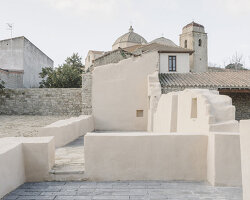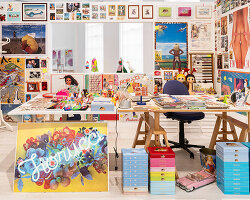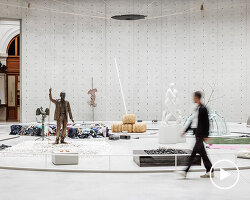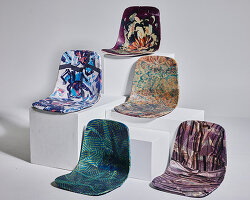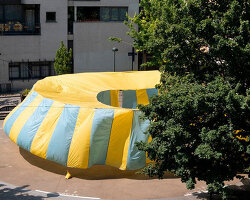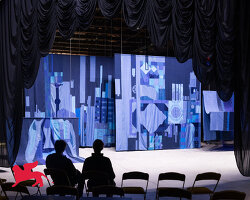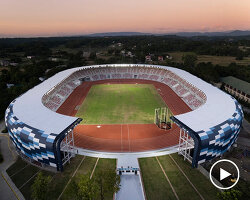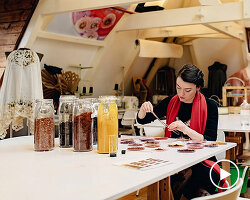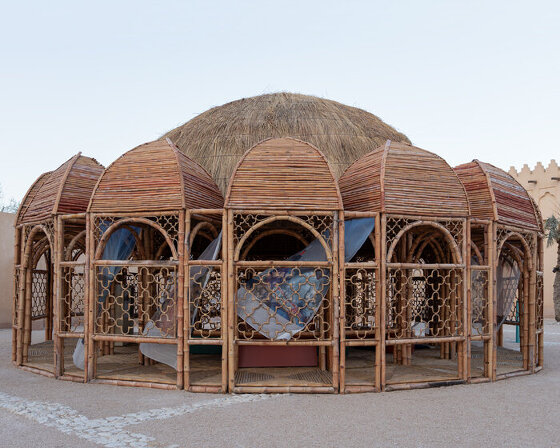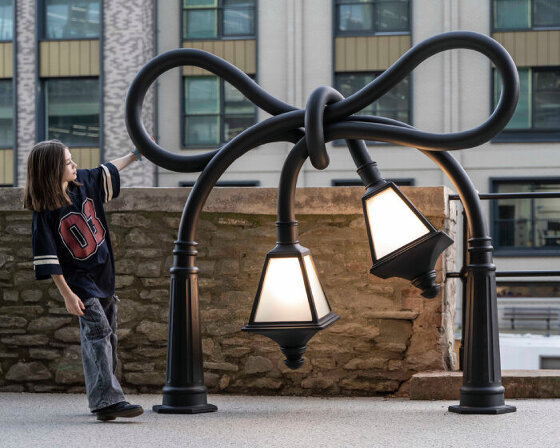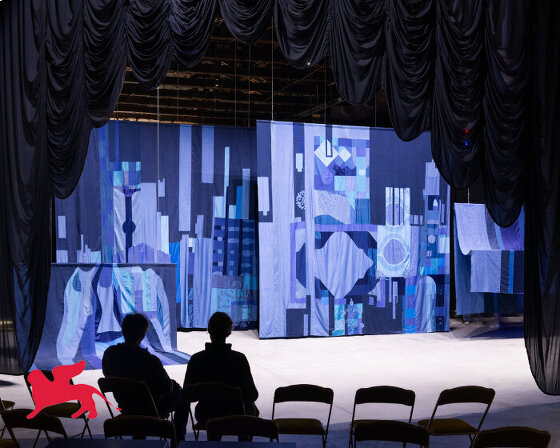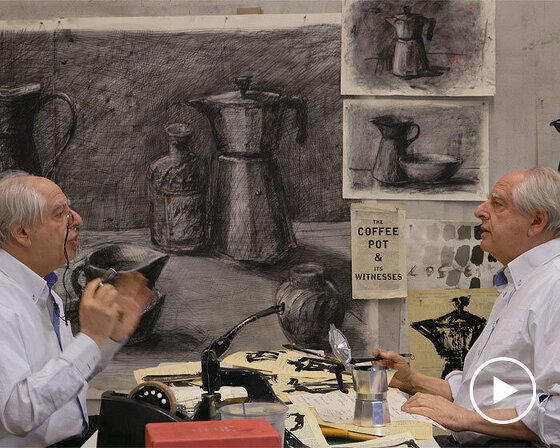manzar opens at national museum of qatar in doha
A first-of-its-kind exhibition at Qatar’s National Museum in Doha sheds light on Pakistan’s visual arts and architectural practices from the 1940s to today. Charting the nation’s creative evolution over nearly eighty decades, since it achieved independence from British rule in 1947, the show offers an in-depth look with more than 200 works in different mediums, ranging from paintings, drawings, videos, and installations, as well as newly commissioned works by artists and architects. Its title, MANZAR: Art and Architecture from Pakistan 1940s to Today, draws from the word ‘manzar’ — which in Arabic and Urdu means scene, view, landscape, or perspective — highlighting the multifaceted perspectives on view by creatives coming both from Pakistan and its diasporas.
The exhibition, on view until January 31st, 2025, is organized by Art Mill Museum, Qatar’s future museum of international modern and contemporary art developed by Qatar Museums and set to open in 2030 in Doha. MANZAR marks the starting point in the museum’s initiative to engage with non-Western art histories, placing perspectives from South Asia through the decades into global social and cultural narratives. ‘This rigorous, scholarly exhibition looking at the significant practices of artists and architects from Pakistan and their connection to the wider history of modern and contemporary art reveals precisely how the future Art Mill Museum will be a vital center for international modern and contemporary art,’ explains Catherine Grenier, Director of Concept of the future Art Mill Museum. ‘As MANZAR so vibrantly demonstrates, our aim is to engage global art histories since 1850 through exhibitions grounded in multidisciplinary and non-hierarchical histories.’
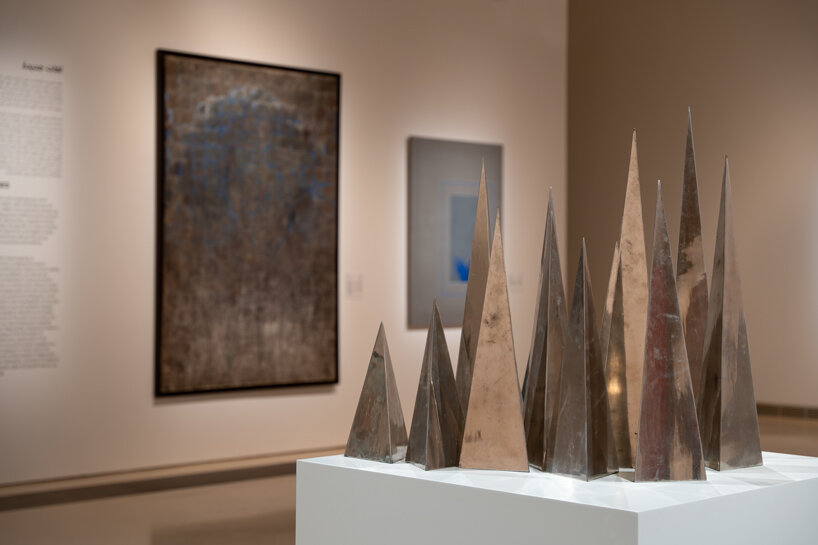
NEW LANGUAGES (front to back):
Zahoor ul Akhlaq, Untitled (1975)
15 steel pyramids,
Courtesy of Taimur Hassan Collection
| Zahoor ul Akhlaq, View from the Tropic of Illegitimate Reality (1975–1978), Acrylic on canvas, Art Mill Museum Collection, Qatar Museums, Doha
| Zahoor ul Akhlaq, Plants 5 (1988), Acrylic on canvas,
Mathaf: Arab Museum of Modern Art Collection, Qatar Museums, Doha | all images courtesy of Qatar Museums © Photo: Kuzey Kaya Buzlu
12 themed gallerieS TRACE pakistan’S CREATIVE EVOLUTION
Curated by Caroline Hancock, Aurélien Lemonier, and Zarmeene Shah, MANZAR unfolds across twelve thematic sections, extending from the gallery spaces of the National Museum of Qatar to its palatial courtyard outside. Throughout, it takes a loosely chronological approach beginning from Pakistan’s conception as an independent nation in 1947, and weaving through sections dedicated to aesthetic experiments and calligraphy, nation-building, regionalism, neo-miniature, the urban vernacular, and the politics of land and water. Filmed interviews and archival materials, alongside a series of public performances and talks, accompany the exhibition, offering further insights into the narratives, perspectives and histories that shape the country’s creative landscape.
With an exhibition design by Pakistani architect Raza Ali Dada, MANZAR starts with a selection of works by pioneering artists who worked under British rule between 1858 and 1947, such as Abdur Rahman Chughtai and Zainul Abedin. Through multiple mediums the narrative unfolds to the post-Partition era, featuring artists such as Anna Molka Ahmed who explored ideas of national identity, modernization, and urban transformation in the nation. Beyond, exploring form and identity in art, MANZAR presents modernist explorations by Pakistani artists who have contributed to and drawn from global perspectives while developing distinct visual languages rooted in the region. Aesthetic experiments by leading figures, like Shakir Ali, Zubeida Agha, and Sadequian, then reflect how their personal modes of expression relate to urban centers in the subcontinent, including modern day Pakistan and Bangladesh. The neo-miniature movement of the 1990s is further represented by renowned artists such as Shahzia Sikander, who transformed traditional miniature painting into a contemporary medium of personal and cultural reflection. Other important artists working in the diaspora whose works are on view include Naiza Khan in London and Bani Abidi in Berlin.
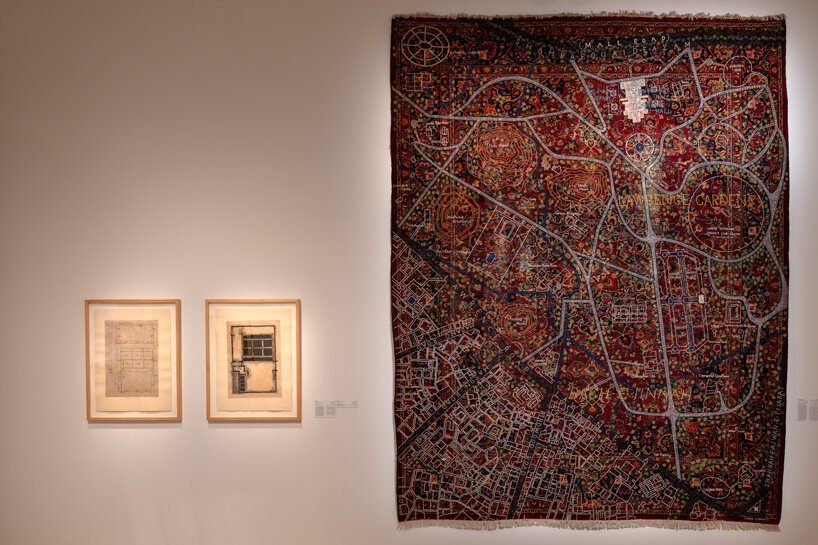
PLACE AND DISPLACEMENT (left to right):
Zarnia, Father’s House 1898–1994 (1994),
Etching on Arches cover buff paper,
Courtesy of Taimur Hassan Collection
| Zarnia, My House 1937 -1958 (1994),
Etching on Arches cover buff paper, chine-collé on handmade Nepalese paper,
Courtesy of Taimur Hassan Collection | David Alesworth, Lawrence Gardens (Bagh-e-Jinnah), 2014, Hand embroidery in dyed sheep’s wool and other fibres into an antique Kashan carpet, Courtesy of Dr Furqaan Ahmed Collection
a look at the nation’s art and architecture from 1947 to today
A strong architectural component looks at the evolution of Pakistan’s architectural identity in response to modernist influences alongside regional concerns. Early works include projects by Western architects such as Louis Kahn and Konstantínos Doxiádis, who were involved in building institutional structures and completing the urban plan of the new capital city during the formative years of Pakistan as a nation-state. MANZAR then showcases the contributions of major Pakistani architects, rooting the dialogue in the local context, including Nayyar Ali Dada, Yasmeen Lari, and Kamil Khan Mumtaz, who have been advocating for regionalism and environmentally sustainable design.
In the courtyard of the Palace of Sheikh Abdullah bin Jassim Al Thani, multimedia installations include the emergency, log-system bamboo shelters by Yasmeen Lari and the Heritage Foundation of Pakistan for flood-affected victims, featuring fabric coverings by textile expert Noorjehan Bilgrami. Environmental concerns play a key role throughout, echoed further across the works of Karachi LaJamia, Amin Gulgee, and Omer Wasim.
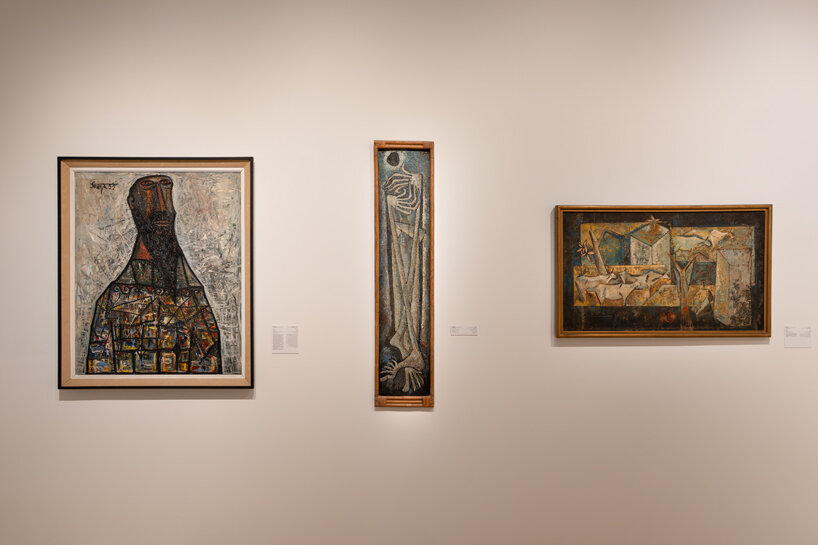
FORMALIST EXPERIMENTS (left to right):
F.N Souza, The Elder (1955), Oil on board, Mathaf: Arab Museum of Modern Art Collection, Qatar Museums, Doha
| Sadequain, Figure in a Landscape, (1962),
Oil on board,
Courtesy of Taimur Hassan Collection
| Shakir Ali, Village (1962),
Oil on canvas,
Courtesy of Moneeza Hashmi Collection
organized by the FUTURE art mill museum
MANZAR is is organised by the future Art Mill Museum and presented in collaboration with the National Museum of Qatar. Designed by ELEMENTAL, led by Pritzker Prize-winning architect Alejandro Aravena, the museum will be located along Doha Corniche, at the site of the current Qatar Flour Mills Company, and is set to open in 2030. Its international art collection, assembled over the past 40 years, will bring together multidisciplinary works of great diversity dating from 1830 to the present. A pioneering institution in the non-Western world, it will represent the modern and contemporary arts of all regions of the globe on an equal basis, engaging local and international audiences alike through multiple narratives of art history.
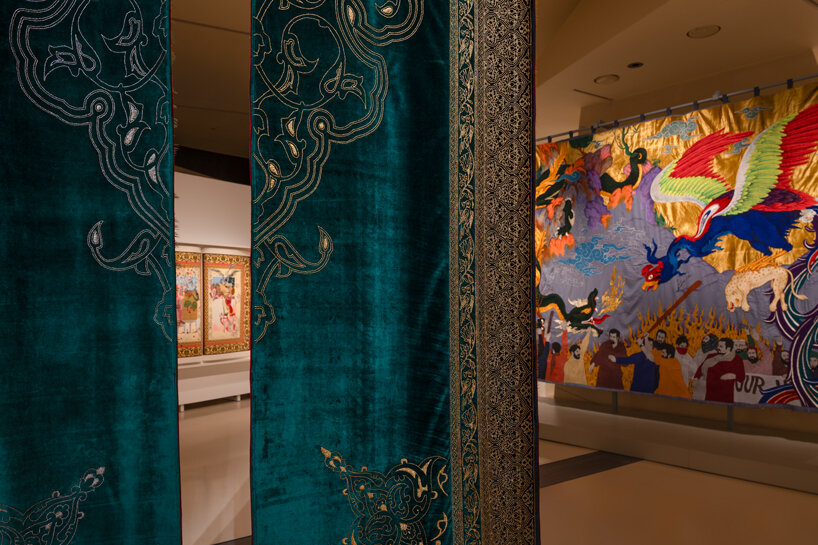
NEO MINIATURE (front to back), Aisha Khalid, You Have Set Me Apart (2017), Fabric and gold-plated steel pins, Art Mill Museum Collection, Qatar Museums, Doha | Khadim Ali, Invisible Border 5 (2019), Embroidery, fabric, collage stitching and dye ink on fabric, Art Mill Museum Collection, Qatar Museums, Doha | Shazia Sikander, The Explosion of the Company Man (2011), Gouache, hand painting, gold leaf and silkscreened pigment on paper, Courtesy of Taimur Hassan Collection, Qatar Museums © Photo: Kuzey Kaya Buzlu
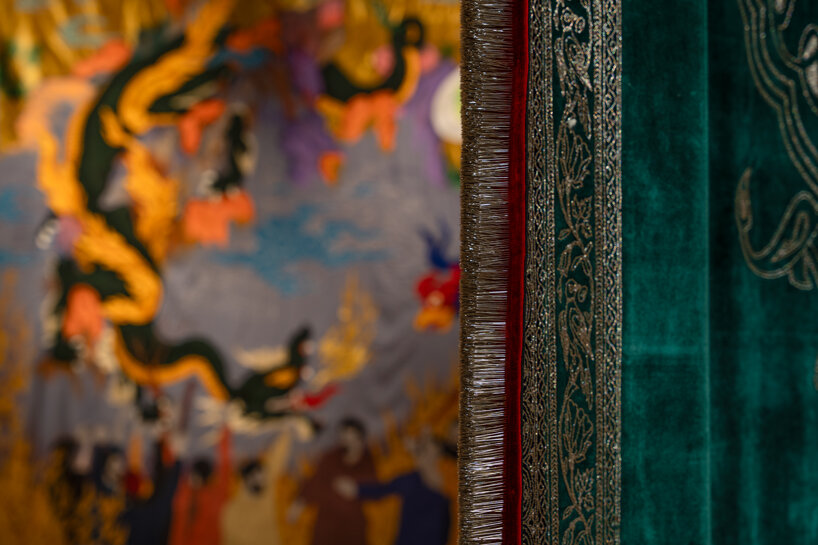
Aisha Khalid, You Have Set Me Apart (2017), Fabric and gold-plated steel pins (detail), Art Mill Museum Collection, Qatar Museums, Doha
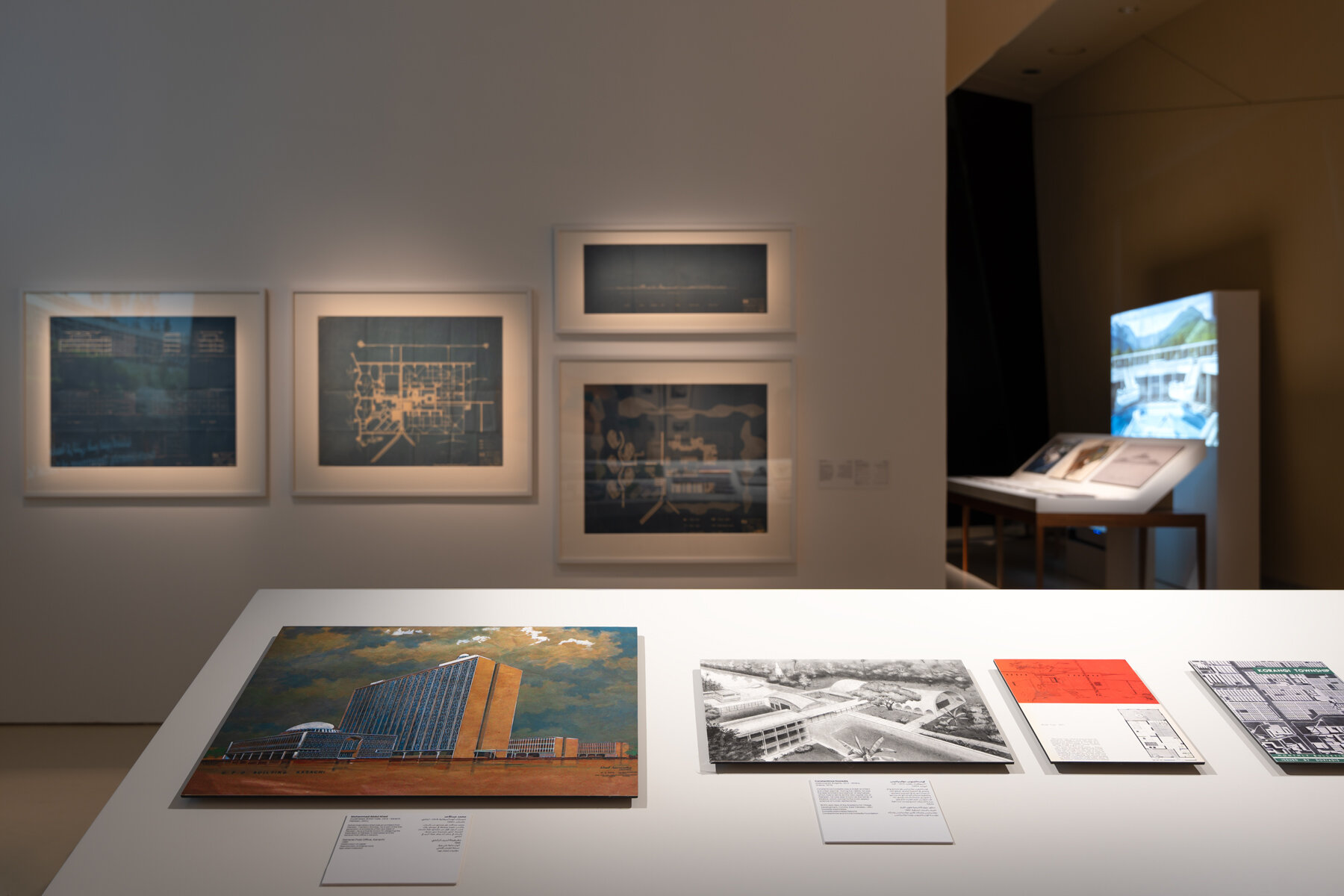
URBAN VERNACULAR (left to right), Huma Bhabha, The Orientalist (2007), Bronze, ed. 2/3 + 2AP, Art Mill Museum Collection, Qatar Museums, Doha | Huma Mulji, Memory of a Pink (2012), Mixed media and enamel on canvas, Courtesy of Taimur Hassan Collection
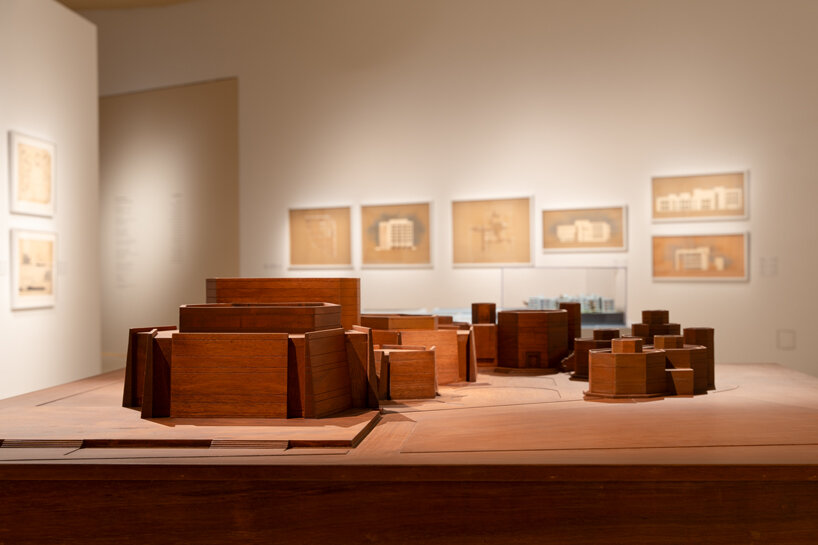
REGIONALISM IN DEBATE, Nayyar Ali Dada, Model of Alhamra Arts Council, Lahore (2024), Coloured wood, Commissioned by the Art Mill Museum, Qatar Museums, Doha
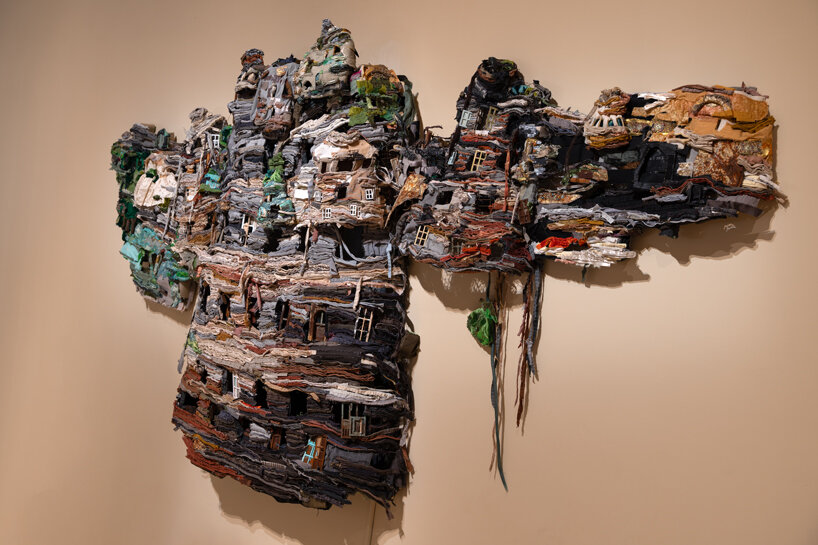
POLITICS OF LAND AND WATER, Ruby Chishti, The Present is a Ruin Without the People (2016), Recycled textiles, wire mesh, metal scrapes, sound 14 min (loop), Art Mill Museum Collection, Qatar Museums, Doha
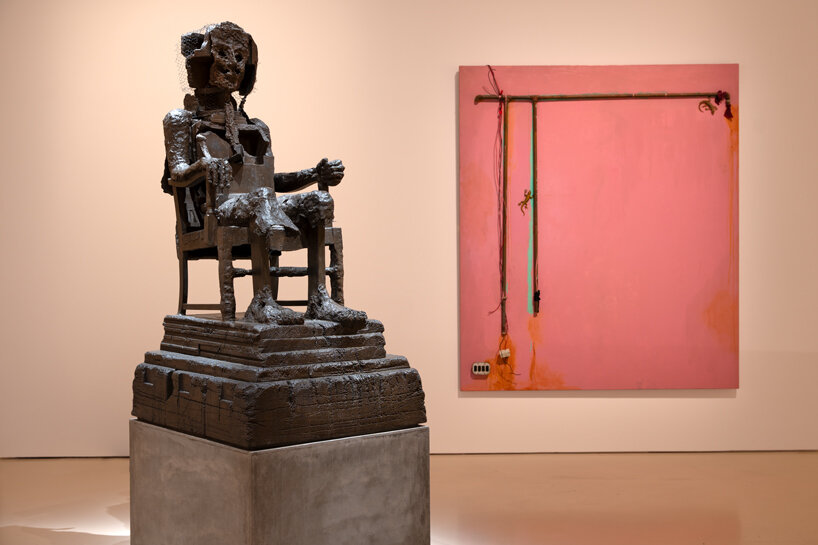
URBAN VERNACULAR (left to right), Huma Bhabha, The Orientalist (2007), Bronze, ed. 2/3 + 2AP, Art Mill Museum Collection, Qatar Museums, Doha | Huma Mulji, Memory of a Pink (2012), Mixed media and enamel on canvas, Courtesy of Taimur Hassan Collection
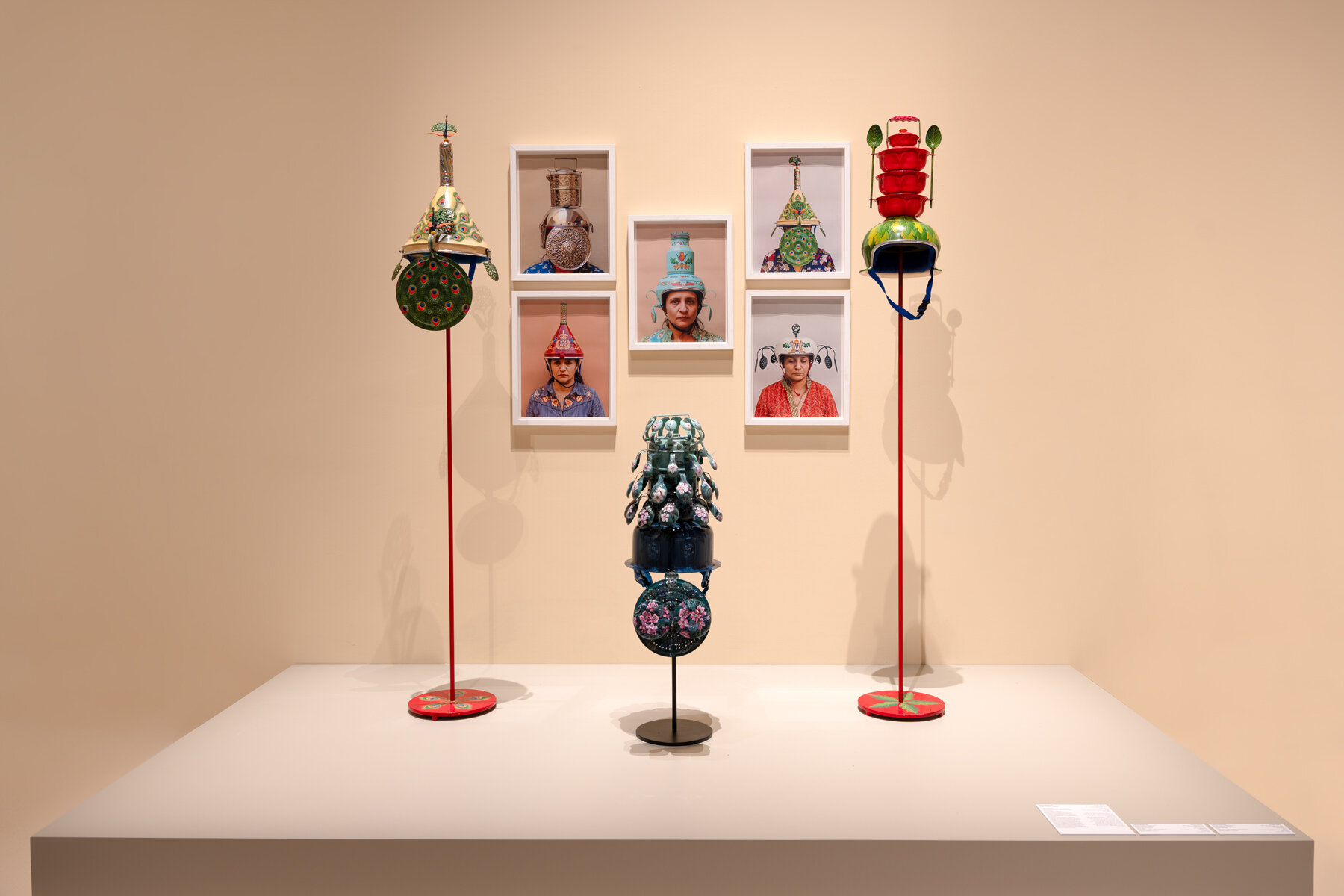
NATION BUILDING, Installation of architectural documents, drawings and photographs from 1950s and 1960s
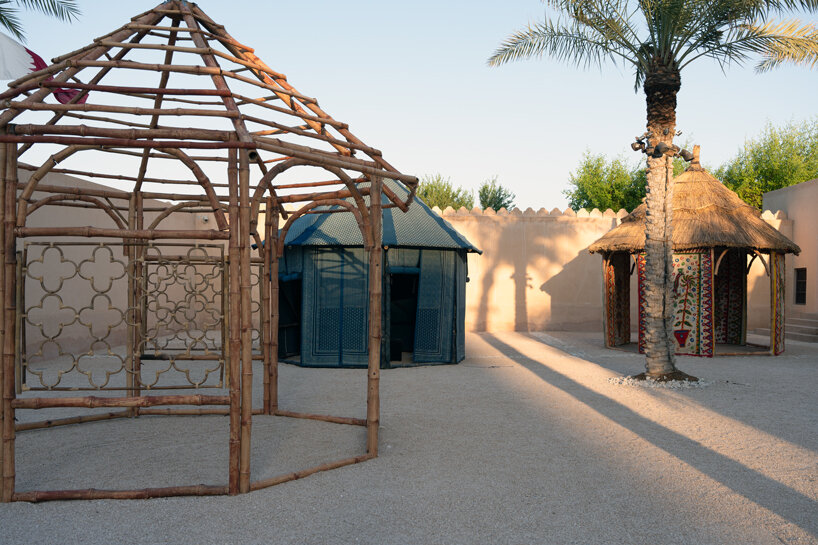
PALACE COURTYARD , Heritage Foundation of Pakistan Single Log Shelter Type 1 & 2 (2024), Mixed bamboo, mud and plaster, Prefabricated Lari Octagreen Structure, Commissioned by the Art Mill Museum, Qatar Museums, Doha | Noorjehan Bilgrami, Nir Kahani – Indigo Story (2024), Textile and indigo dye, Commissioned by the Art Mill Museum, Qatar Museums, Doha
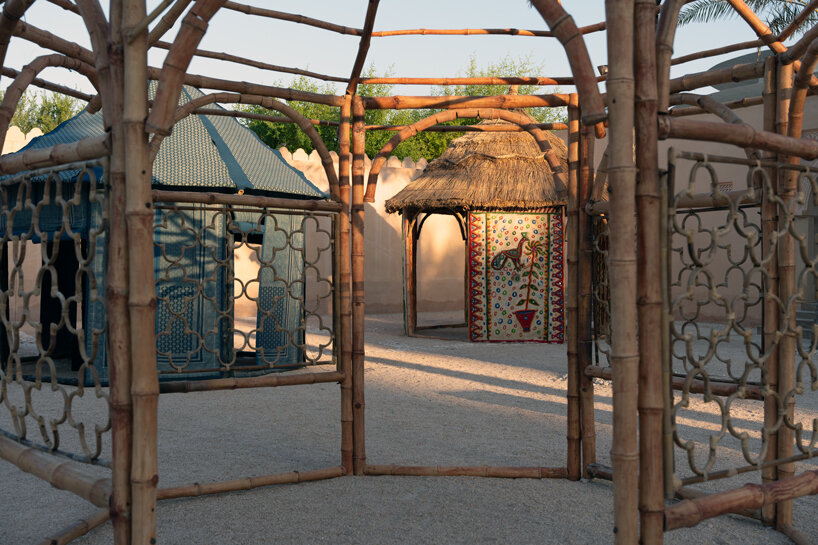
PALACE COURTYARD , Heritage Foundation of Pakistan Single Log Shelter Type 1 & 2 (2024), Mixed bamboo, mud and plaster, Prefabricated Lari Octagreen Structure, Commissioned by the Art Mill Museum, Qatar Museums, Doha | Noorjehan Bilgrami, Nir Kahani – Indigo Story (2024), Textile and indigo dye, Commissioned by the Art Mill Museum, Qatar Museums, Doha
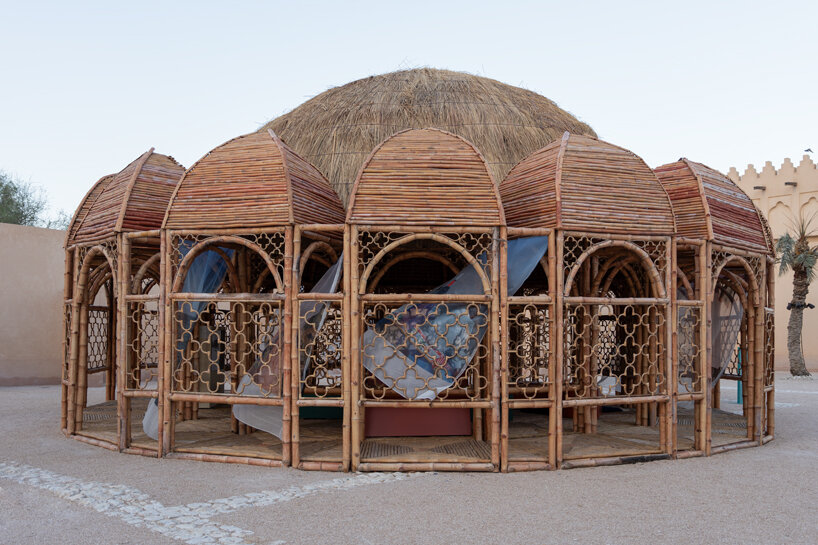
PALACE COURTYARD, Heritage Foundation of Pakistan, Community Centre (2024), Bamboo, Prefabricated Lari Octagreen Structure, Commissioned by the Art Mill Museum, Qatar Museums, Doha
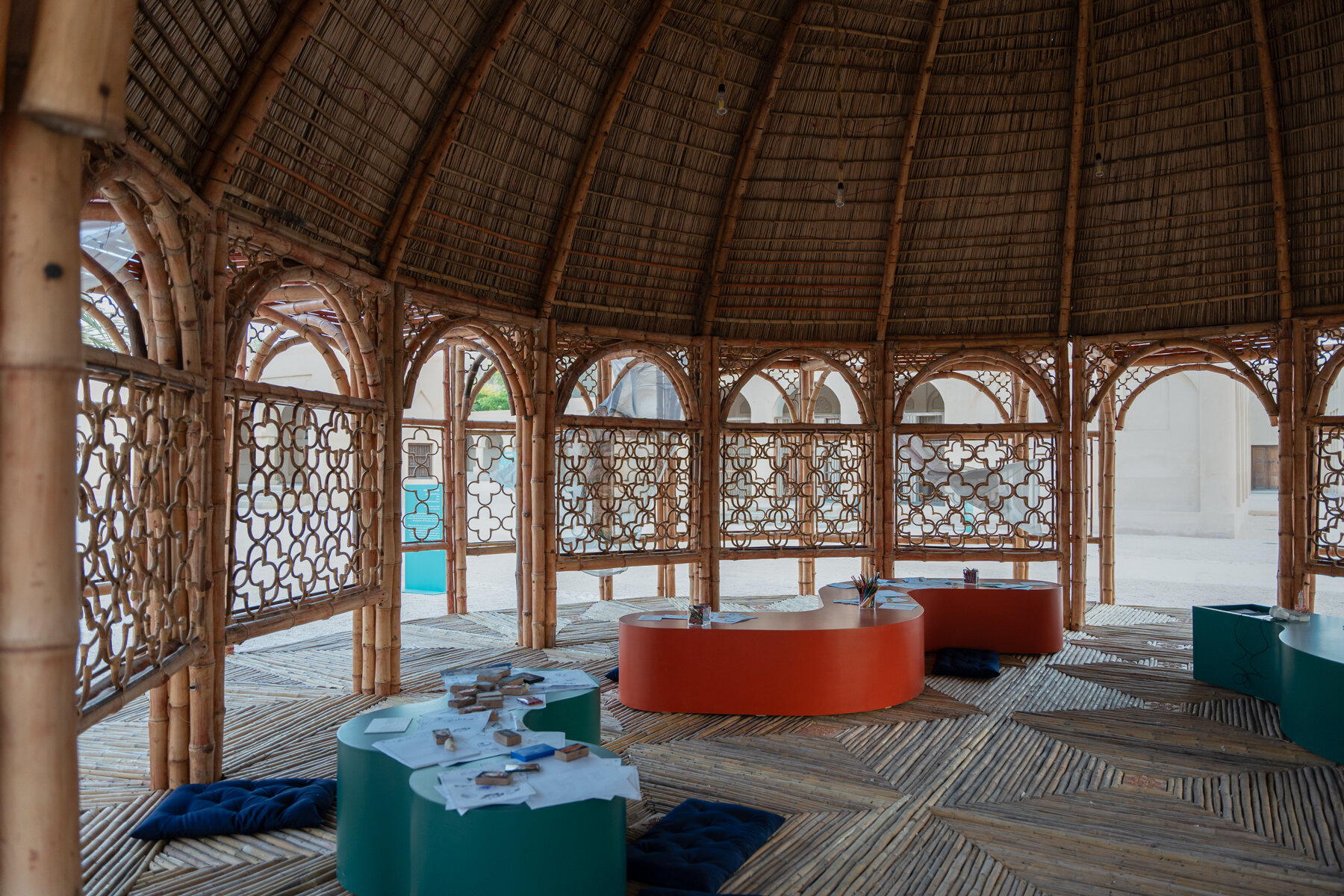
PALACE COURTYARD, Heritage Foundation of Pakistan, Community Centre (2024), Bamboo, Prefabricated Lari Octagreen Structure, Commissioned by the Art Mill Museum, Qatar Museums, Doha | Karachi Lajamia, Hamare Siyal Rishte – Our Watery Relations (2021–2024), Installation, Courtesy of the artist
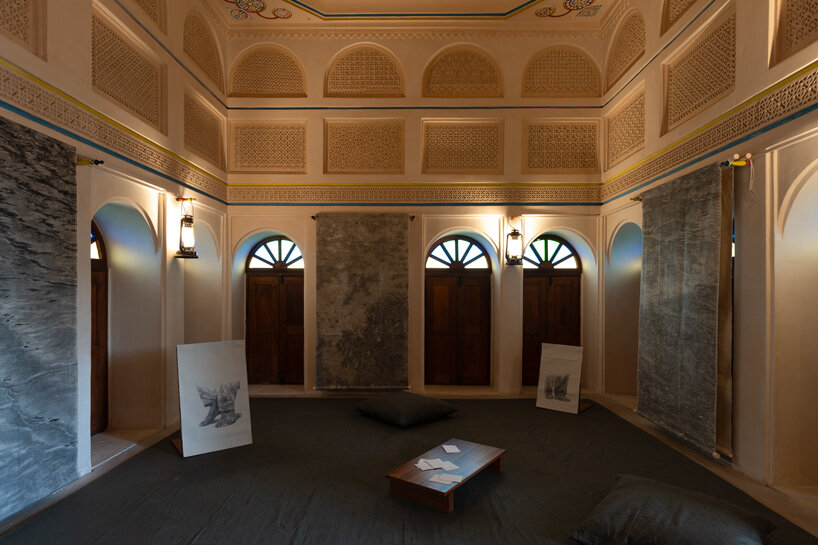
PALACE COURTYARD, Omer Wasim, In Shadows of the Sun (2024), Component 1 of 3: Drawings, an offset publication, Commissioned by the Art Mill Museum, Qatar Museums, Doha
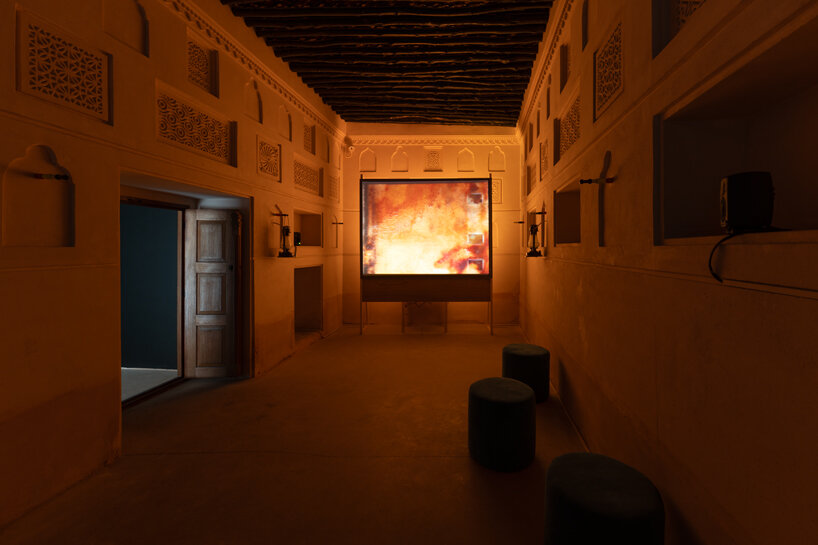
PALACE COURTYARD, Mariah Lookman, Behrupiya (2024), Two channel video installation with sound, and script in print, 31 mins, Commissioned by the Art Mill Museum, Qatar Museums, Doha
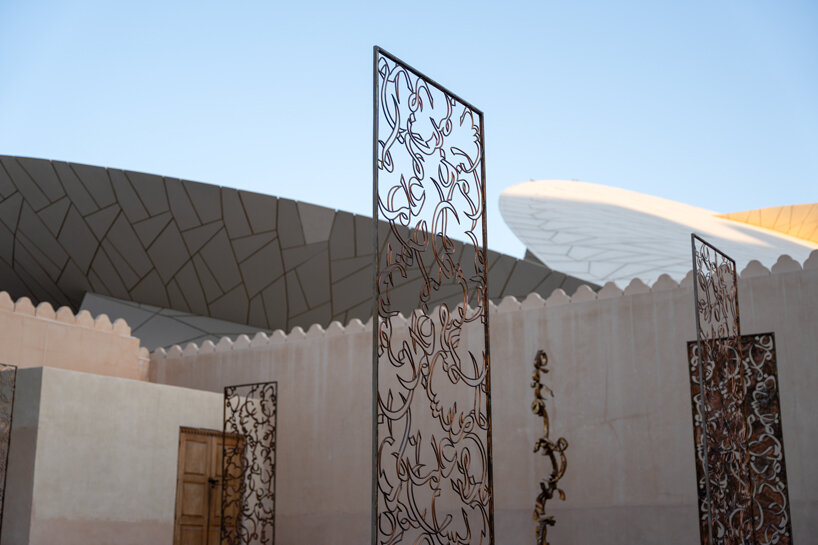
PALACE COURTYARD, Heritage Foundation of Pakistan, Community Centre (2024), Bamboo, Prefabricated Lari Octagreen Structure Commissioned by the Art Mill Museum, Qatar Museums, Doha
project info:
name: MANZAR: Art and Architecture from Pakistan 1940s to Today
location: National Museum of Qatar, Doha | @nmoqatar
organizer: Art Mill Museum
dates: November 1st, 2024 — January 31st, 2025
curators: Caroline Hancock, Aurélien Lemonier, Zarmeene Shah, Aebhric Coleman
collaborators: Noor Butt, Deena Hammam, Farah Al Sidiky
exhibition design: Raza Ali Dada | @razaalidada


